Can You Crate Train a Cat? 5 Proven Methods That Actually Work
Are you having trouble housebreaking your kitten or dealing with bad behaviors? You’re not alone. Many cat owners struggle with these issues. If you’re wondering ‘Can you crate train a cat?‘, the answer is yes – crate training can be a big help for both you and your cat.
Crate training isn’t just about keeping your cat in a box. It’s about giving them a safe place to relax. It also helps with separation anxiety and stops them from getting into trouble when you’re away. In this article, we’ll look into crate training for cats. We’ll also share five proven methods to make it easier and more effective.
Table of Contents
Understanding Cat Crate Training Basics
Crate training for cats is more than just putting them in a crate. It’s about making a safe space for them. When asking ‘can you crate train a cat?‘, you need to understand cat behavior and be patient.
What Is Cat Crate Training?
Cat crate training is about making a crate a safe and cozy spot for your cat. It’s great for travel, vet visits, or a quiet place at home.
Why Cats Differ from Dogs in Crate Training
When people ask ‘Can you crate train a cat?‘, they should know that cats are more territorial and independent than dogs. They might not like the idea of a crate as much. So, you need to introduce it gently.
Setting Realistic Expectations
When considering ‘can you crate train a cat?’, remember every cat is different, and what works for one might not work for another. Setting realistic expectations is important. Be patient and consistent, as rushing can stress both you and your cat.
Knowing these basics helps you start crate training that fits your cat’s needs and personality.
Benefits of Crate Training Your Feline Friend
Many wonder ‘Can you crate train a cat?‘ – and the answer is yes, crate training is great for cat owners. It keeps your cat safe and happy. It gives them a cozy, secure place to be.
Safety During Travel and Emergencies
For those asking ‘Can you crate train a cat?’ – during emergencies or travel, crate training is a big help. It keeps your cat calm and safe. This is key when you’re traveling or at the vet.
Creating a Safe Space for Your Cat
A crate is a quiet, comfy spot for your cat. It’s perfect when your home is busy or changing. It allows your cat to relax and feel secure.
Medical Benefits and Stress-Free Vet Visits
If you wonder ‘Can you crate train a cat?’ for vet visits, the answer is yes – crate training helps significantly. A crate-trained cat is less stressed and calmer. This makes vet trips better for both you and your cat.
Helping Multi-Pet Households Coexist
For homes with many pets, crate training is a lifesaver. It gives each pet a safe place to be alone. This reduces conflicts and makes life easier for everyone.
Can You Crate Train a Cat? Debunking Common Myths
Many people think crate training a cat is cruel or won’t work. But understanding the truth about ‘can you crate train a cat?‘ can help you decide if it’s good for your feline friend. Knowing the facts can guide you in making the right choice.
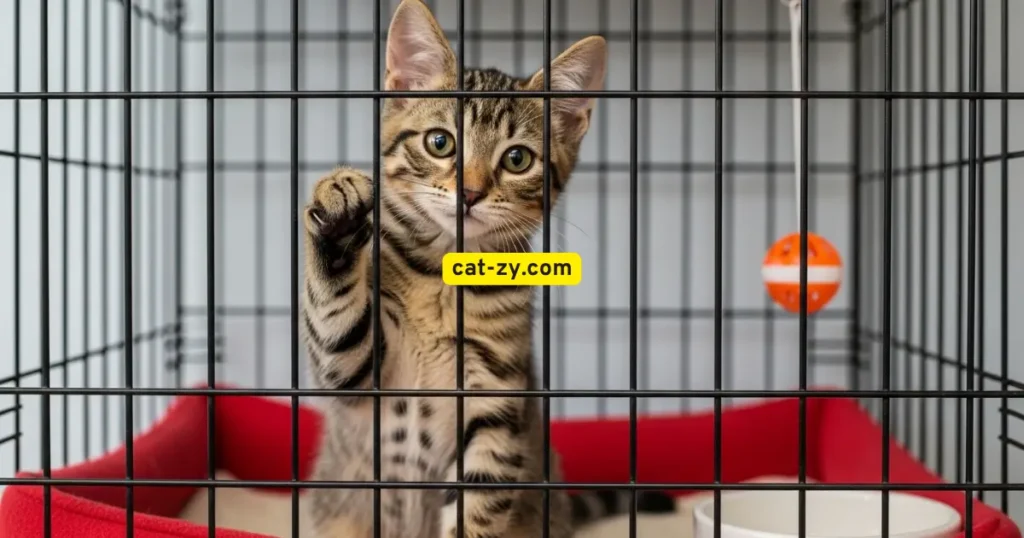
Addressing Misconceptions About Cats and Crates
One big myth is that cats can’t be crate trained because they’re not like dogs. But, cats can learn to like their crates with the right approach. They can even find them cozy.
Another myth is that crate training is cruel. But, done right, it can be safe and comfy for your cat. It can also help reduce stress and anxiety.
Understanding Natural Cat Behaviors
Cats like to be alone and have their own space. In the wild, they use dens for safety. A crate can be like a cozy den for your cat at home.
Why Some Cats Prefer Enclosed Spaces
Some cats like enclosed spaces because they feel safe and comfy. By making the crate a cozy spot with familiar things, your cat will see it as a safe place.
By clearing up these myths and understanding your cat’s nature, you can decide if crate training is right. It might even make your cat happier.
Essential Equipment for Successful Cat Crate Training
Getting the right equipment is key to cat crate training. It makes the process easier for you and your cat. Choose the best tools for a stress-free experience.
Choosing the Right Crate Type and Size
Finding the right crate size is important. It should let your cat stand, turn, and lie down easily. Look for crates with good air and a strong build.
Wire crates offer visibility and air. Plastic crates are cozy and enclosed.
Comfort Items and Accessories
Add comfort items like your cat’s favorite blanket or bed. Toys or a familiar scent can also make the crate feel like home.
Treats and Rewards for Training
Treats are crucial for training. Use your cat’s favorite treats to reward them for calmly entering the crate. This positive action will make the crate a good place for them.
Location and Placement Considerations
The crate’s location affects training. Place it in a quiet spot where your cat feels safe. Avoid areas with drafts or direct sunlight to keep it comfortable.
Method 1: The Gradual Introduction Technique
If you’re asking ‘Can you crate train a cat?‘, try the gradual introduction technique as your starting method. It’s all about slow and steady progress. This method helps your cat get used to the crate without feeling scared or trapped.
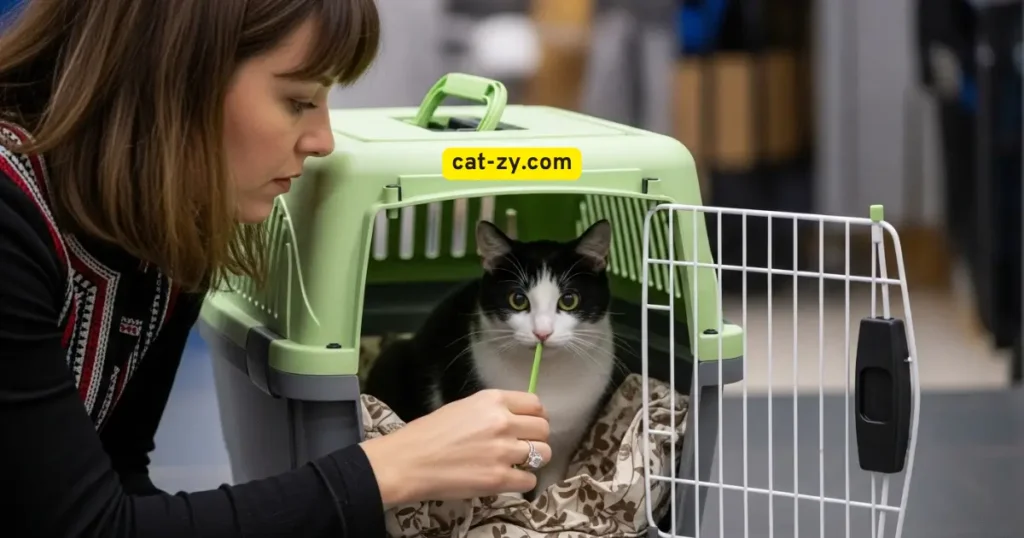
Setting Up the Perfect Environment
Before introducing the crate, set up the perfect environment. Pick a quiet, distraction-free spot where your cat feels safe. Make sure the crate is clean and free of any bad smells.
Put the crate in the chosen spot and leave the door open. Let your cat explore it at their own pace. You can encourage exploration by placing treats or toys near the crate.
Step-by-Step Implementation
The gradual introduction technique is a step-by-step process. Start by letting your cat get used to the crate’s presence. Then, encourage them to enter it. Here’s a simple plan:
1. Place the crate in the chosen area and let your cat explore it.
2. Once your cat is comfortable with the crate’s presence, start placing treats or meals inside it.
3. Encourage your cat to enter the crate by calling them or using toys.
Timeline for Success
The time it takes for your cat to get comfortable with the crate varies. It depends on their temperament and age. It can take a few days to a few weeks. Be patient and don’t rush the process.
Signs Your Cat Is Responding Positively
If your cat is responding well, you might see them enter the crate on their own. They might even show a preference for it. Look for signs like reduced stress and anxiety around the crate.
Method 2: Positive Reinforcement Training
When asking ‘Can you crate train a cat?’ successfully, understanding your cat’s behavior is key to the training process. Use positive reinforcement techniques to make the crate a positive place. This makes your cat more open to training.
Using Treats and Rewards Effectively
First, pick treats your cat loves. High-value treats work well to get your cat into the crate. Put treats near and inside the crate to encourage your cat to explore. As your cat gets used to it, switch to praise and affection instead of treats.
Clicker Training for Crate Acceptance
Clicker training is great for positive reinforcement. It teaches your cat that going into the crate is good. Start by clicking and rewarding your cat for just approaching the crate. Then, make the criteria harder, like entering the crate.
Creating Positive Associations
Make the crate a cozy spot for your cat. Add their favorite toys or bedding. Creating a cozy environment makes your cat like the crate. Be patient, as it takes time.
Avoiding Punishment-Based Approaches
Don’t use punishment or negative reinforcement. It can make your cat anxious and stressed. Reward good behavior instead. This builds a positive and trusting bond with your cat.
Stick to positive reinforcement and be consistent. This way, you can crate train your cat safely and stress-free. It’s good for both you and your cat.
Method 3: The Meal-Time Strategy
For those wondering ‘Can you crate train a cat?’ using meals, mealtime is a great chance to train without stress. Use your cat’s eating schedule to make the crate a positive place.
Feeding Schedule Adjustments
Start by changing your cat’s eating times to match crate training. Consistency is key to teaching your cat that meals and the crate go together.
Progressively Moving Food Inside the Crate
Put your cat’s food near the crate first. Then, move it inside slowly. This gradual transition makes your cat get used to eating near and then inside the crate.
Extending Time in the Crate After Meals
After eating, keep your cat in the crate for a bit. Start with short times and increase them slowly. This helps your cat get used to staying in the crate.
Transitioning to Closed-Door Feeding
When your cat is okay with eating in the crate, start closing the door. Watch how your cat reacts and slow down if needed to prevent stress.
Method 4: Play and Toy Technique
Make the crate a fun spot for your cat by adding play to your training. This method uses your cat’s love for play and exploration. It turns the crate into a welcoming area.
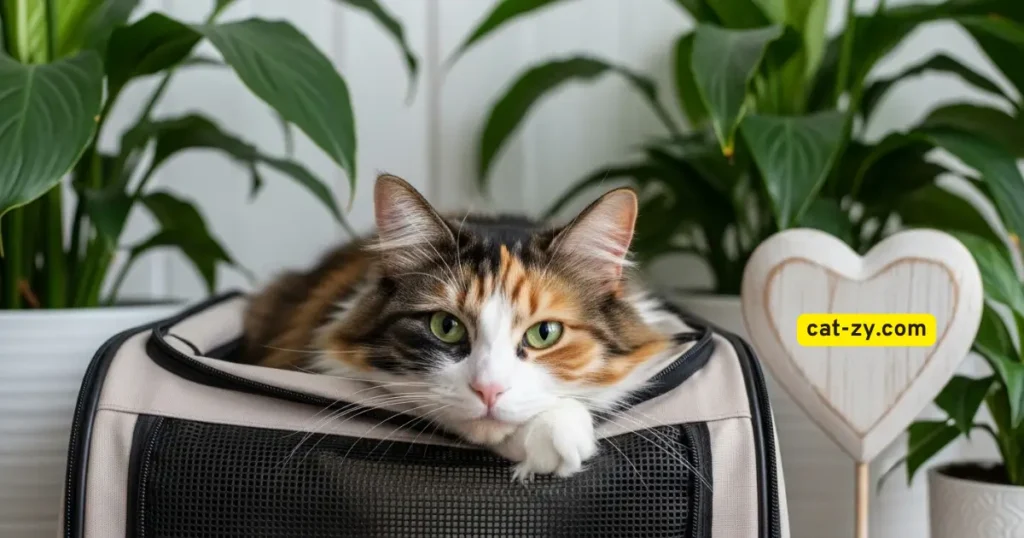
Using Interactive Toys to Encourage Crate Exploration
Begin by placing interactive toys near the crate to draw your cat in. Feather wands and laser pointers are great for getting your cat to move towards the crate. Once your cat gets used to it, move the toys inside the crate.
Play Sessions Near and Inside the Crate
Start play sessions near the crate, then inside it. This helps your cat see the crate as a good place. Always praise your cat during these times to encourage good behavior.
Creating a Fun Crate Environment
Turn the crate into a fun spot with different toys and a cozy feel. Add a soft blanket or towel for comfort. Change the toys often to keep your cat interested.
Rotating Toys to Maintain Interest
Change the toys in the crate often to keep things exciting. This stops boredom and keeps the crate inviting. Catnip-infused toys or new textures are especially good at keeping your cat’s attention.
Method 5: The Sanctuary Approach
By turning the crate into a sanctuary, your cat will feel safe and calm. This method makes the crate a cozy spot your cat will want to stay in.
Making the Crate a Stress-Free Zone
Place the crate in a quiet spot at home. Add your cat’s favorite bedding or blankets. A toy or a piece of your clothing with your scent can also reassure them.
Using Calming Products and Techniques
Calming products like pheromone diffusers or treats can make the crate a better place for your cat. These items mimic natural feline pheromones, signaling safety and comfort.
Gradual Door Closure Training
Start by closing the door while you’re there. Then, slowly increase the time you’re away. Give your cat treats for staying calm.
Creating a Consistent Safe Haven
Consistency is crucial for a haven. Make sure the crate is always a positive place. Avoid using it for punishment and keep a routine for entering and leaving.
Following the sanctuary approach can make crate training positive for your cat. It turns the crate into a comforting and secure space.
Conclusion
You’ve learned that the answer to ‘Can you crate train a cat?‘ is definitely yes, and that crate training is beneficial for your cat. It makes a safe and comfy space for them. The five methods we talked about can help you train your cat well.
Remember, being patient and consistent is important. Crate training might take some time. But with positive rewards and a slow start, your cat will get used to it. A crate-trained cat is safer when traveling and feels more at ease at home.
In short, crate training is great for your cat’s health. By using the techniques we shared, you’re on your way to a happy and well-adjusted pet.
FAQ
Can you crate train an older cat, or is it better to start with a kitten?
Yes, you can crate train a cat of any age – the question ‘can you crate train a cat?’ has a positive answer regardless of age. But, kittens are usually easier to start with because they adapt quickly. Older cats might need more time and patience to get used to the crate.
How long can I leave my cat in the crate?
The time depends on your cat’s age, health, and needs. Adult cats should not be in the crate for more than 6-8 hours. Kittens need breaks more often.
What are the signs that my cat is stressed or unhappy in the crate?
Look for signs like meowing, pacing, trying to escape, or showing anxiety near the crate. If you see these, make the crate a more comfortable place for your cat.
Can crate training help with housebreaking my cat?
Crate training can help with housebreaking. It gives your cat a place to hold their bladder and bowel movements until you can take them to the litter box.
Is it okay to crate my cat at night?
Crating your cat at night can be safe and reduce separation anxiety. Make sure the crate is comfy and near your bedroom for your cat’s security.
How do I introduce my cat to the crate if they are initially resistant?
Begin by placing the crate in a common area with the door open. Use treats and toys to encourage your cat to enter. Slowly increase the time they spend in the crate.


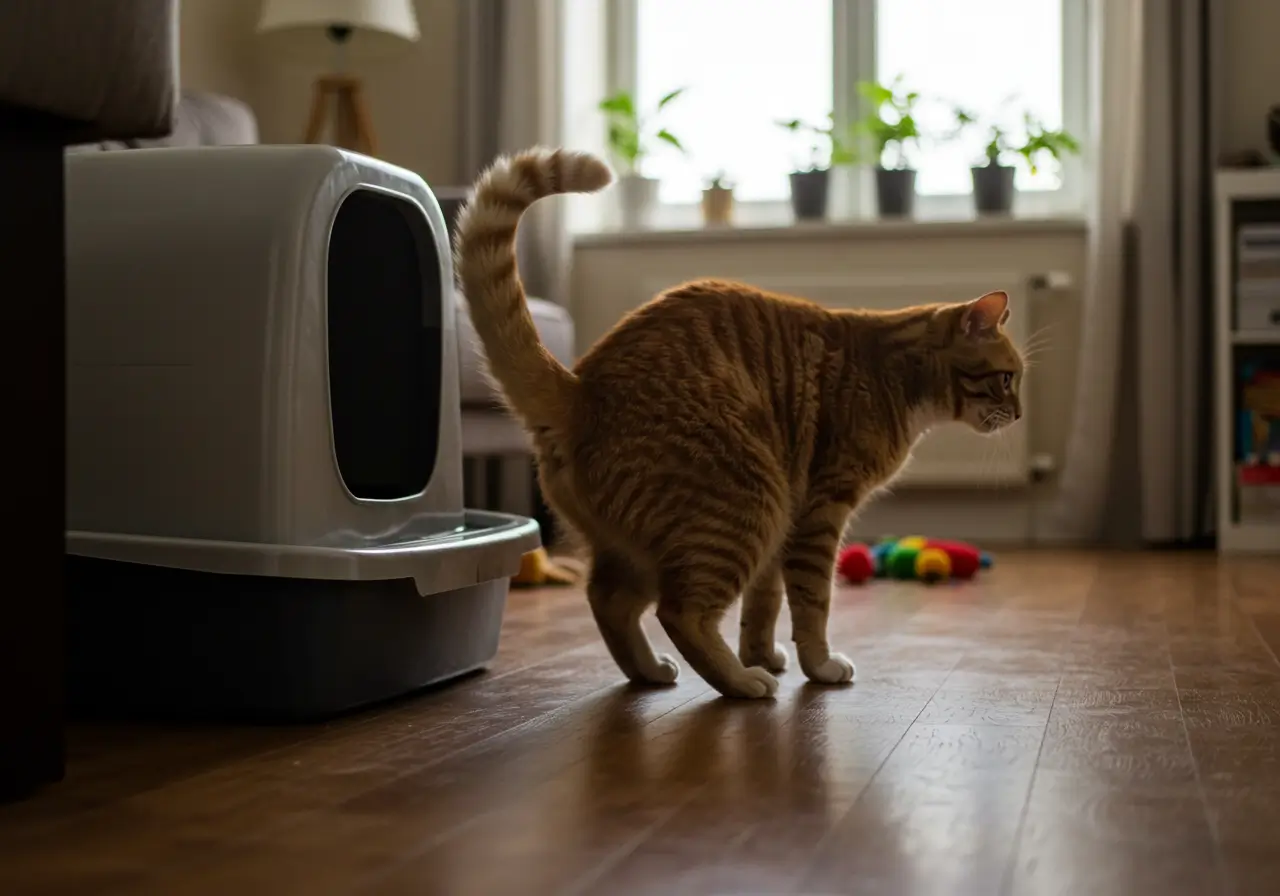




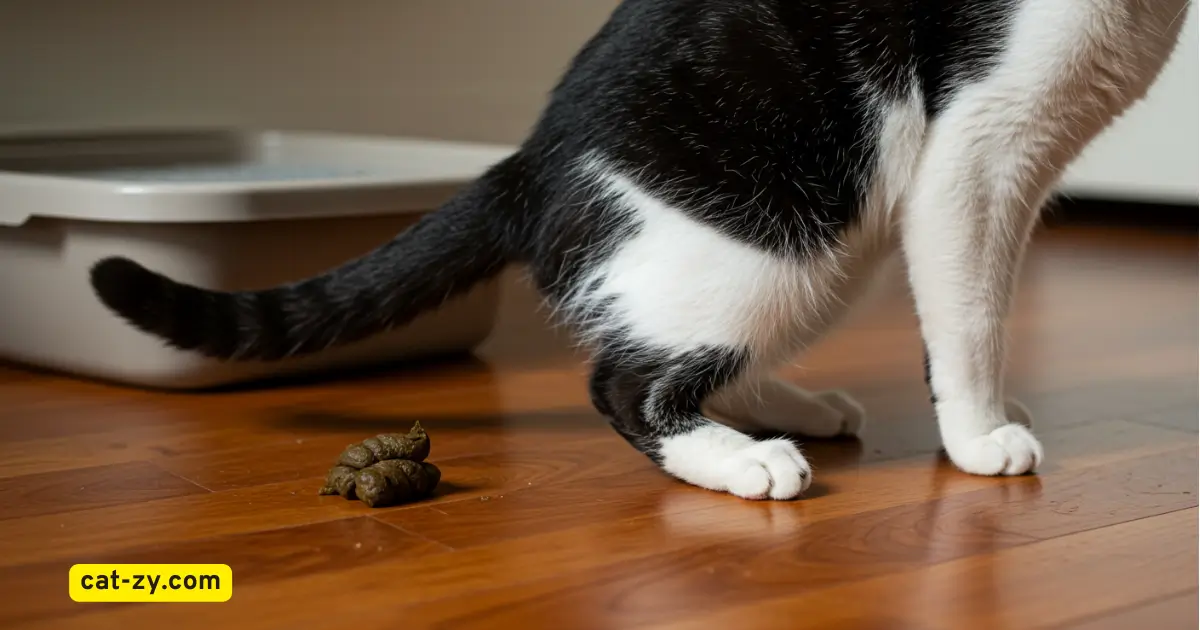
One Comment
Comments are closed.